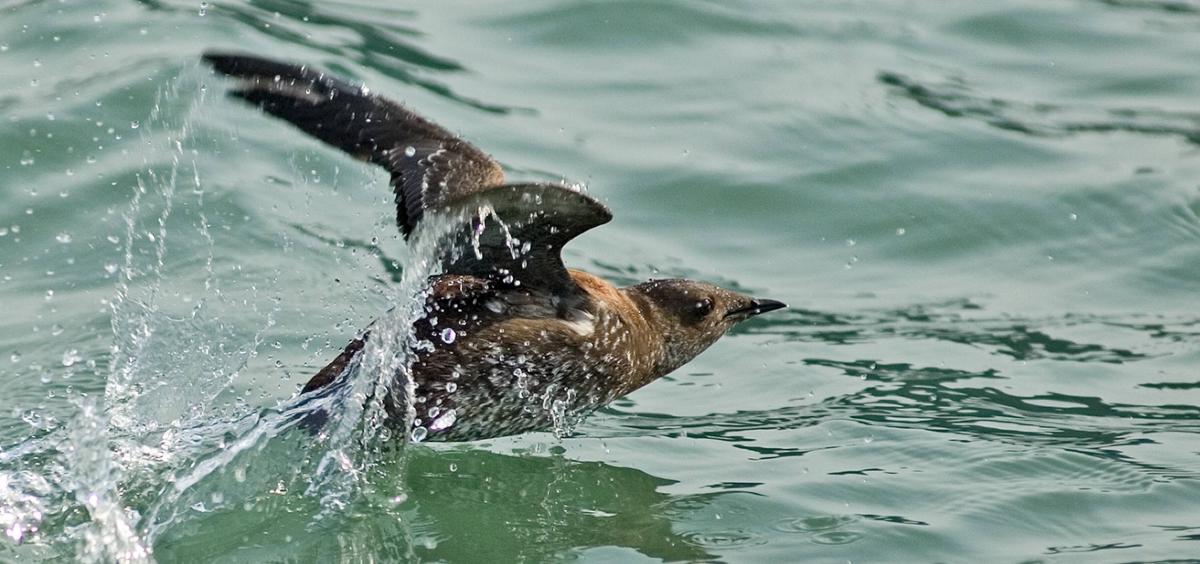
- Details
- By Jenna Kunze
More than 500 acres of forest on the northern coast of California have been returned to Indigneous stewardship—and name.
Save the Redwoods League, a nonprofit aimed at protecting and restoring California redwoods, purchased the swath of forested land in Mendocino County in 2020 for $3.6 million. The funding was fully backed by Pacific Gas & Electric Company (PG&E) as part of its program to offset habitat loss, according to the League’s manager of land protection, Catherine Elliott.
“As part of (PG&E’s) clearing vegetation around power lines to prevent fires, they may inadvertently affect habitat,” Elliot told Native News Online. “So they entered an agreement and a permit with U.S.Fish and Wildlife that says in advance of that, U.S. Fish and Wildlife wants PG&E to protect other forests. We were already in the works to purchase this forest… for its species that are listed under the Endangered Species Act, so PG&E said it was a good fit.”
Want more Native News? Get the free daily newsletter today.
Last week, the League transferred its land ownership of the 500 acres to InterTribal Sinkyone Wilderness Council, a tribal consortium made up of ten federally recognized tribes from northern California. After the title transfer, the Council permitted the League a conservation easement to the property, in this case prohibiting commercial logging in perpetuity and requiring regular surveying for certain wildlife species.
In its first move as Indigenous stewards under the law, the Council renamed the forested area— most recently called Andersonia West— back to the Sinkyone language name Tc’ih-Léh-Dûñ, meaning Fish Run Place. Tc’ih-Léh-Dûñ is home to the endangered northern spotted owl and marbled murrelet.
“Renaming the property Tc’ih-Léh-Dûñ lets people know that it’s a sacred place; it’s a place for our Native people,” said Crista Ray (Scotts Valley Band of Pomo Indians), a board member of the Sinkyone Council, in a statement. “It lets them know that there was a language and that there was a people who lived there long before now.”
Moving forward, the InterTribal Sinkyone Wilderness Council will steward the land with “a light hand, if anything at all,” former council executive director and current consultant for the council, Hawk Rosales (Apache decent) told Native News Online. As part of the original purchase and conditions, PG&E allocated an additional $1.1 million to pay tribal members to continue to maintain the land.
The historically logged area is currently in a period of regrowth, Rosales said.
“The council's view about this property…is that there will be no damage allowed to any of the features that are there,” he said. “It’s a place to protect nature for the sake of nature, and the spirits and the beings that are there. There are many animal and plant relatives that are culturally of great significance to the tribal members. So the idea here is to leave nature alone, and there will be almost no human impact.”
The forest is hardly accessible by car, and takes eight hours to reach, Rosales added.
The land-back story fits into President Biden’s larger national policy to conserve at least 30 percent of the nation's oceans and lands by 2030. The “30 X 30” initiative was first introduced by Haaland in 2019 when she served as a Congresswoman. Outlined in his “America the Beautiful” report released last March, one initiative explicitly prioritizes “honoring tribal sovereignty and supporting the priorities of tribal nations.”
Hawk said that the Tc’ih-Léh-Dûñ land, while it only represents a small portion of the forest, is significant to the 30 X 30 initiative because it is surrounded by “a mosaic of really critically important ecosystems.” It’s bordered by 7,250-acre Sinkyone Wilderness State Park to the north, west, and south, and the 50,000-acre Usal Forest to the east.
“When they are all put together, in this scheme of…a regional set of watersheds and ecosystems, it’s going to really make a difference, as far as the protection of nature and …working with climate change,” Hawk said. “This is one of the ways, by preventing large trees from being cut in the future… because old growth redwoods are the best and most effective sequesters of carbon known.”
More Stories Like This
United Indian Nations of Oklahoma Urges Tribal Citizens to Carry ID Amid ICE Enforcement ActionsOglala Sioux Tribe Rejects ICE Conditions for Information on Detained Members
Supreme Court Victory Secures Alaska Native Subsistence Fishing Rights
Three Kings Day Feast Honors Pueblo Self-Governance Rooted in Pre-Colonial Traditions
Navajo Council Committees Tackle Grazing Enforcement, Code Revisions
Help us defend tribal sovereignty.
At Native News Online, our mission is rooted in telling the stories that strengthen sovereignty and uplift Indigenous voices — not just at year’s end, but every single day.
Because of your generosity last year, we were able to keep our reporters on the ground in tribal communities, at national gatherings and in the halls of Congress — covering the issues that matter most to Indian Country: sovereignty, culture, education, health and economic opportunity.
That support sustained us through a tough year in 2025. Now, as we look to the year ahead, we need your help right now to ensure warrior journalism remains strong — reporting that defends tribal sovereignty, amplifies Native truth, and holds power accountable.
 The stakes couldn't be higher. Your support keeps Native voices heard, Native stories told and Native sovereignty defended.
The stakes couldn't be higher. Your support keeps Native voices heard, Native stories told and Native sovereignty defended.
Stand with Warrior Journalism today.
Levi Rickert (Potawatomi), Editor & Publisher

